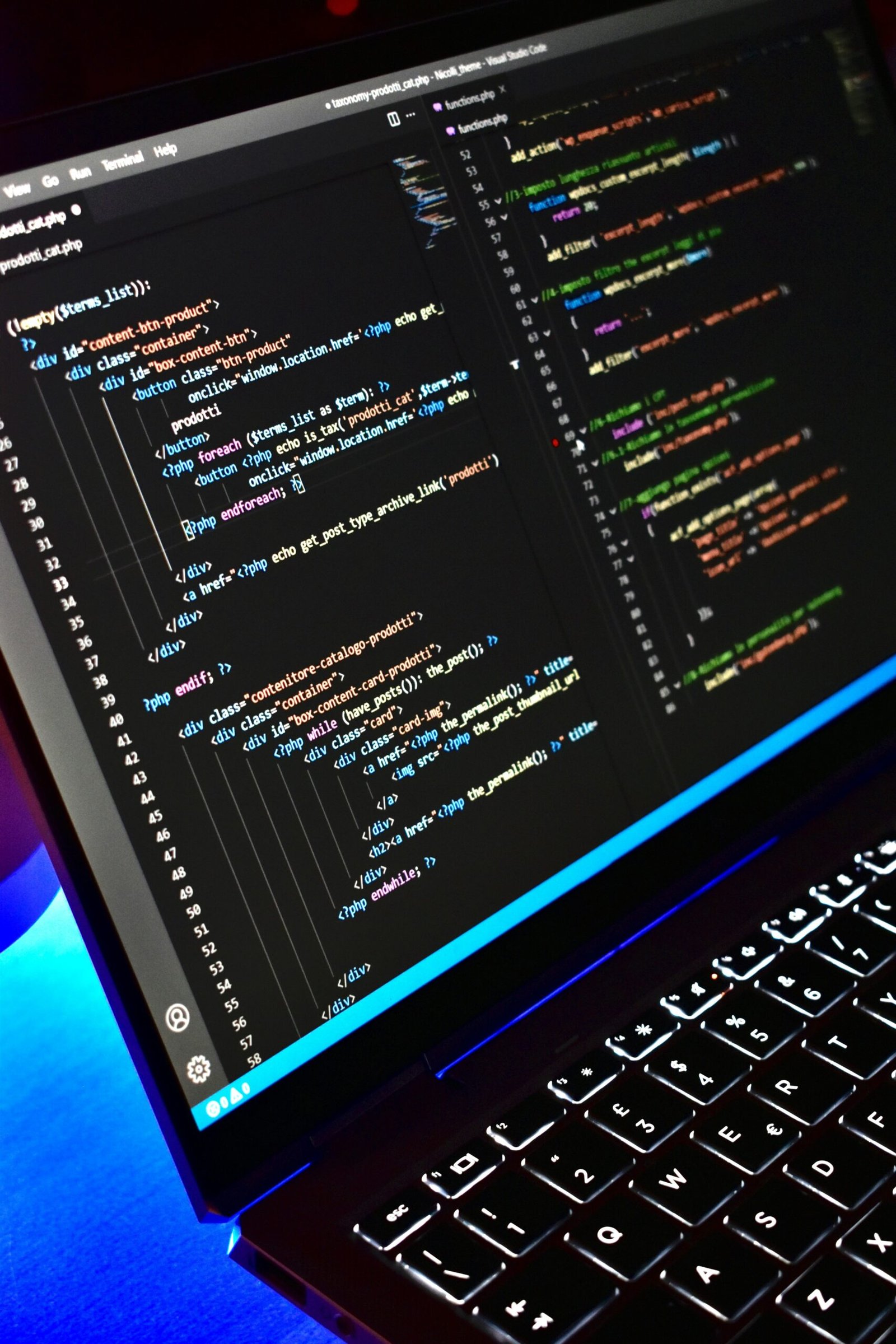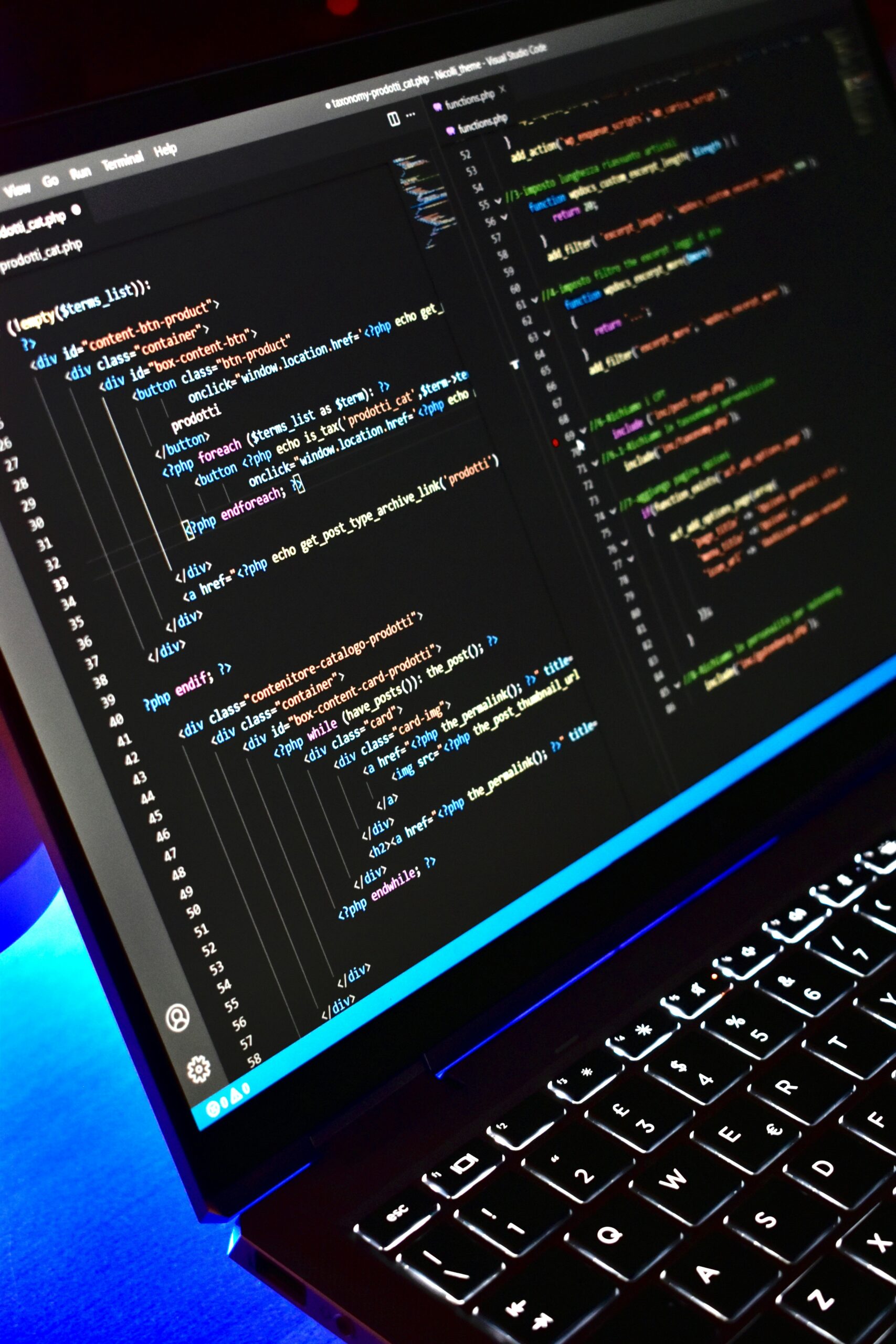What is Full Stack Development?
Full stack development is a comprehensive approach to web application design and building that encompasses both the frontend and backend components of a web application. The term “full stack” refers to the full spectrum of technologies and layers involved in creating a functional website or application, ranging from client-side interfaces to server-side operations and database management.
The frontend component, often referred to as the client side, is responsible for what users interact with directly in their web browsers. It includes everything that users see and experience, such as layout, design, and user interface elements. Frontend developers utilize languages and technologies such as HTML (HyperText Markup Language), CSS (Cascading Style Sheets), and JavaScript to create visually appealing and interactive interfaces. Their goal is to ensure that the application is user-friendly and functional across different devices and screen sizes.
On the other hand, backend development encompasses the server side of the application, which is not directly visible to users. Backend developers handle the logic, database interactions, authentication, and data processing that power the frontend experience. They typically work with server-side languages and frameworks, such as Node.js, Python, Ruby on Rails, and PHP, to build the server infrastructure required for application performance. Additionally, they manage databases, which store and retrieve data necessary for the application’s functionality, using systems like MySQL, MongoDB, or PostgreSQL.
In this collaborative environment, frontend and backend developers must work together closely to create a seamless user experience. Understanding how these components interact is crucial for anyone looking to venture into the field of full stack development. As technology continues to evolve, staying updated on popular frameworks and libraries, such as React, Angular, and Vue.js for the frontend, or Express and Django for the backend, is essential for aspiring full stack developers.
Essential Skills for Aspiring Full Stack Developers
To embark on a successful journey in full stack development, aspiring developers must cultivate a diverse set of skills that combine both technical and soft competencies. Technical skills include proficiency in various programming languages, frameworks, and tools that are foundational to web development. JavaScript, HTML, and CSS are essential for front-end development, while back-end proficiency typically requires knowledge of languages such as Python, Java, or Node.js. Additionally, familiarity with frameworks such as Angular, React, or Vue.js for the front end, along with Express or Django for the back end, is crucial in modern development environments.
Beyond programming languages, an understanding of databases is imperative. Developers should master SQL databases like MySQL or PostgreSQL, as well as NoSQL options such as MongoDB. Learning about RESTful APIs and the principles of web services is another important aspect, as these enable seamless communication between front-end and back-end systems. Knowledge of version control systems, particularly Git, is also valuable for tracking changes and facilitating collaboration within development teams.
Soft skills play a pivotal role in a developer’s success as well. Problem-solving abilities are essential for troubleshooting issues and optimizing code. Additionally, effective communication skills are necessary for articulating technical concepts to non-technical stakeholders and for collaborating with team members. Teamwork is another vital attribute, as full stack developers often work in agile environments, necessitating coordination and mutual support amongst colleagues.
For those looking to expand their skill set, various learning paths can prove beneficial. Online courses, coding bootcamps, and tutorials are excellent resources for hands-on practice. Platforms such as Coursera, Udacity, and freeCodeCamp offer structured courses that introduce both fundamental and advanced concepts in full stack development. By embracing both technical and soft skills, aspiring developers can position themselves effectively for a successful career in this dynamic field.

Setting Up Your Development Environment
To embark on your journey into full stack development, establishing a robust development environment is crucial. The choice of a code editor plays a significant role in your efficiency as a developer. Popular options include Visual Studio Code, Atom, and Sublime Text. These editors offer various features such as syntax highlighting, extensions, and built-in terminal capabilities, which facilitate coding across different programming languages. It is advisable to choose an editor that complements your workflow and enhances productivity.
Version control is essential in any development project, allowing you to track changes and collaborate seamlessly with others. Git has gained prominence as a powerful version control system. To harness its potential, install Git on your machine and create a repository for each project you embark on. Utilizing platforms like GitHub or GitLab can further streamline collaboration, allowing you to share your code and contribute to others’ projects while benefiting from version tracking and issue management.
In addition to code editors and version control, setting up a local server environment is necessary for testing and deployment purposes. Options such as XAMPP, WAMP, MAMP, or Docker provide the necessary tools to simulate a server environment on your machine. Each has its advantages, depending on your specific needs. For instance, Docker allows you to create isolated environments for different applications, while XAMPP is user-friendly for beginners.
Organizing your projects is equally vital in full stack development. A well-structured directory enhances clarity and ease of management. It is often helpful to categorize files based on their purposes, such as separating frontend and backend components. Furthermore, utilizing package managers like npm or yarn for managing dependencies ensures that your projects are consistently maintained and easily reproducible across different environments.
Building Your First Full Stack Application
Embarking on your journey in full stack development can be both exciting and daunting, particularly when it comes to the practical aspect of building your first application. A highly recommended project for beginners is a simple to-do list application. This project allows you to explore essential concepts while creating something functional and satisfying.
The process begins with designing your application’s database. For a to-do list app, a straightforward structure can include a table for tasks, with fields such as task ID, description, and completion status. This database design should support CRUD operations (Create, Read, Update, Delete), which are fundamental in app development. Using a database like MongoDB or PostgreSQL can facilitate the storage and retrieval of data efficiently.
Next, you will need to create the frontend of your application. Utilizing HTML, CSS, and JavaScript, you can develop an intuitive user interface that allows users to add, complete, and delete tasks. Frameworks such as React or Vue.js can enhance interactivity and provide a smoother user experience. As you build the frontend, ensure that the design is user-friendly and accessible.
Your application’s backend serves as the bridge between the frontend and the database. By using Node.js and Express, you will set up server routes to handle the application logic and data processing. These backend routes will be crucial for performing operations on the database, such as saving new to-do items or marking them as completed.
Conclusion
Along the way, adhere to best practices in coding by maintaining organized and readable code. Use version control, such as Git, to manage changes in your project efficiently. Debugging and testing your application should not be overlooked; use tools like Postman for API testing and familiarize yourself with debugging techniques to identify and resolve issues as they arise.
With these steps, you are well on your way to developing a fully functional full stack application. Embracing this learning process will build a solid foundation for advanced projects in the future.
Read Our Latest Blog
Common Programming Errors and How to Avoid Them
Phone Number: +91-7488456170
Email ID: abhishek@eepl.me
Our Platforms:
Digilearn Cloud
EEPL Test
Live Emancipation
Follow Us on Social Media:
Instagram – EEPL Classroom
Facebook – EEPL Classroom
Stay connected and keep learning with EEPL Classroom!












